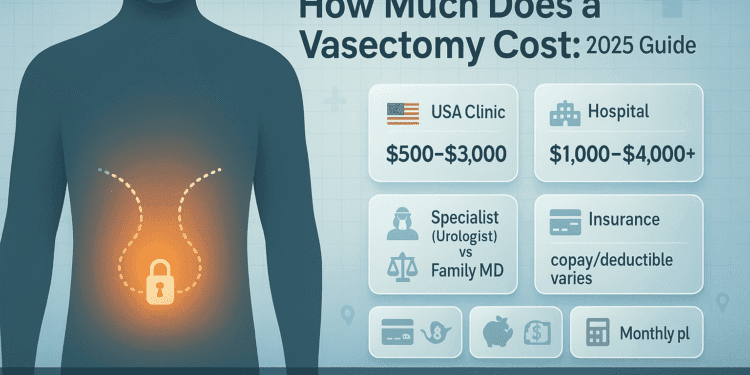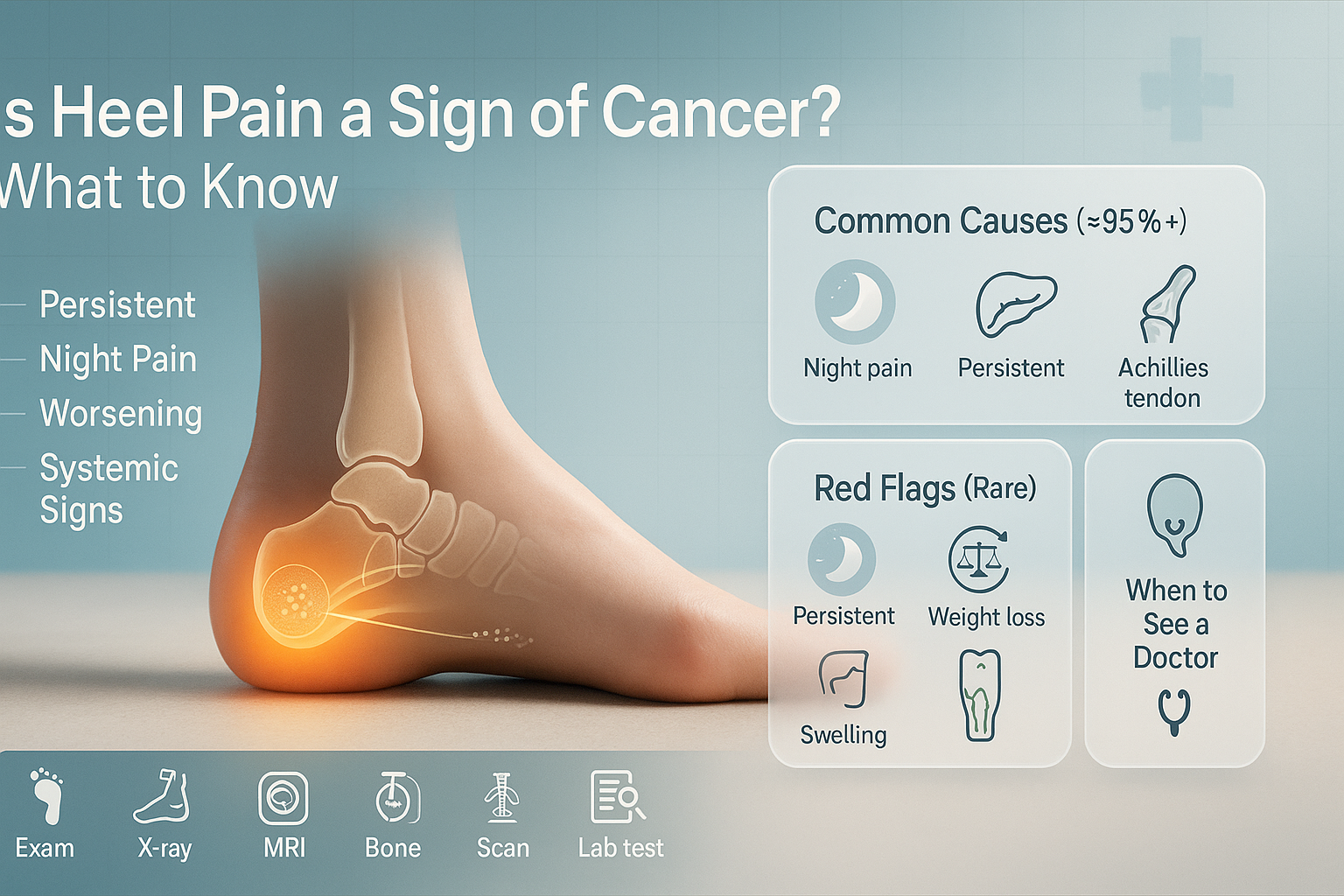How Much Does a Vasectomy Cost: Your Complete Financial Guide to Male Sterilization
Are you considering a vasectomy but wondering about the financial commitment? You’re not alone. Thousands of men each year grapple with this exact question, and the answer isn’t as straightforward as you might think. The cost of a vasectomy can vary dramatically depending on where you live, which doctor you choose, and what your insurance covers.
Let’s dive deep into the world of vasectomy costs, breaking down everything from the basic procedure price to those sneaky hidden fees that might catch you off guard. By the end of this guide, you’ll have a crystal-clear picture of what to expect financially when making this life-changing decision.
Understanding Vasectomy: What You’re Paying For
What is a vasectomy procedure?
Before we talk dollars and cents, let’s understand what you’re actually purchasing. A vasectomy is a minor surgical procedure designed to make men permanently sterile by cutting or blocking the vas deferens – the tubes that carry sperm from the testicles. Think of it as creating a roadblock on the highway that prevents sperm from reaching their destination.
The procedure itself typically takes 20-30 minutes and involves making small incisions in the scrotum to access the vas deferens. Your surgeon will then cut, remove a small section, or block these tubes using various techniques. It’s considered one of the most effective forms of permanent birth control, with a success rate of over 99%.
Why men choose vasectomy over other contraceptive methods
When you crunch the numbers, a vasectomy often makes financial sense in the long run. While the upfront cost might seem substantial, consider this: the average couple spends hundreds of dollars annually on other birth control methods. Over a lifetime, those costs add up significantly, making a one-time vasectomy investment surprisingly economical.
Plus, there’s the convenience factor. No more worrying about prescription refills, potential side effects from hormonal methods, or the stress of unplanned pregnancies. It’s like buying a house instead of renting – a bigger investment upfront, but you’re building equity in your reproductive freedom.
Average Vasectomy Costs Across Different Settings
Private clinic costs
In private clinics, you’ll typically find vasectomy costs ranging from $500 to $3,000. The wide range reflects differences in geographic location, clinic reputation, and what’s included in the package. Some clinics offer all-inclusive pricing that covers the consultation, procedure, and follow-up visits, while others charge separately for each component.
Private clinics often provide a more personalized experience with shorter wait times and more flexible scheduling. However, this convenience comes at a premium. You’re essentially paying for the VIP treatment – comfortable waiting rooms, more one-on-one time with the doctor, and often same-day consultations.
Hospital-based procedures
Hospital-based vasectomies generally cost more, typically ranging from $1,000 to $4,000 or even higher. The increased cost reflects the hospital’s overhead expenses, including facility fees, administrative costs, and the involvement of additional medical staff.
However, some men prefer the hospital setting for peace of mind, especially if they have anxiety about medical procedures. The hospital environment provides immediate access to emergency care if complications arise, though serious complications from vasectomies are extremely rare.
Urologist vs family doctor pricing
Urologists, being specialists in male reproductive health, typically charge more for vasectomies than family doctors. A urologist’s fee might range from $1,200 to $3,500, while a family doctor might charge $800 to $2,500 for the same procedure.
But here’s the thing – you’re often paying for expertise and experience. Urologists perform vasectomies more frequently and may be more skilled at handling complications or unusual anatomical situations. It’s like choosing between a general contractor and a specialist for home renovations – sometimes the extra cost is worth the peace of mind.
Geographic Cost Variations: Location Matters
Urban vs rural pricing differences
Geography plays a huge role in vasectomy pricing. Urban areas typically see higher costs due to increased overhead expenses, higher physician salaries, and greater demand for services. You might pay $2,000-$3,500 for a vasectomy in New York City or San Francisco, while the same procedure in rural Montana or Alabama might cost $800-$1,500.
Rural areas often have lower costs but fewer options. You might have to travel further to find a qualified provider, which could add transportation and potentially lodging costs to your overall expense. It’s a trade-off between convenience and cost savings.
State-by-state cost breakdown
The variation between states can be eye-opening. Generally, coastal states and those with higher costs of living see premium pricing for medical procedures, including vasectomies.
Most expensive states for vasectomy
States like California, New York, Massachusetts, and Hawaii typically see the highest vasectomy costs, often ranging from $2,000 to $4,000 or more. These states have higher physician fees, facility costs, and overall healthcare expenses that translate directly to patient costs.
Most affordable states for the procedure
Meanwhile, states in the South and Midwest often offer more affordable options. States like Mississippi, Arkansas, Oklahoma, and Tennessee frequently see vasectomy costs in the $800-$2,000 range. The lower cost of living and reduced overhead expenses in these areas benefit patients seeking the procedure.
Insurance Coverage for Vasectomy Procedures
What most insurance plans cover
Here’s some good news – many insurance plans do cover vasectomy procedures. Under the Affordable Care Act, most insurance plans are required to cover contraceptive methods, and vasectomy typically falls under this umbrella. However, the level of coverage varies significantly between plans.
Some insurance plans cover the entire procedure cost, leaving you with just a copay or deductible. Others might cover 80% of the cost, leaving you responsible for the remaining 20% plus any deductible amounts. It’s crucial to contact your insurance provider directly to understand your specific coverage.
Medicare and Medicaid coverage options
Medicare Part B typically covers vasectomy procedures when deemed medically necessary. However, you’ll still be responsible for the Part B deductible and 20% coinsurance. Medicaid coverage varies by state, with some states providing full coverage while others have restrictions or require prior authorization.
Pre-authorization requirements
Many insurance plans require pre-authorization for vasectomy procedures. This means your doctor must submit paperwork proving the medical necessity of the procedure before you can receive coverage. The process typically takes 1-2 weeks, so plan accordingly and don’t wait until the last minute to start this process.
Out-of-Pocket Expenses: Hidden Costs to Consider
Consultation fees
Don’t forget about the initial consultation cost, which typically ranges from $150 to $400. Some doctors include this fee in their overall vasectomy package, while others charge separately. During this visit, your doctor will review your medical history, explain the procedure, and answer your questions.
This consultation is crucial for making an informed decision, so don’t skip it to save money. Think of it as an investment in ensuring you’re making the right choice for your situation.
Follow-up appointments and testing
Post-vasectomy care includes follow-up appointments and semen analysis testing to confirm the procedure’s success. These appointments typically cost $100-$300 each, and you’ll likely need 2-3 follow-up visits over several months.
Sperm count testing costs
Semen analysis testing is particularly important because you’re not considered sterile immediately after the procedure. These tests typically cost $50-$150 each, and you’ll need at least two tests showing zero sperm count before getting the all-clear. Some clinics include these tests in their package price, while others charge separately.
Factors That Influence Vasectomy Pricing
Surgeon experience and reputation
Just like any service, you often get what you pay for with vasectomy procedures. Highly experienced surgeons with excellent reputations typically charge premium prices. While this might mean paying $1,000-$2,000 more, the investment could be worthwhile for the expertise and peace of mind.
Experienced surgeons often have lower complication rates, use the latest techniques, and provide better overall patient experiences. They’re also more likely to handle unusual situations or complications that might arise during the procedure.
Facility type and location
The type of facility significantly impacts cost. A procedure performed in a luxury medical spa will cost more than one performed in a basic clinic. Similarly, facilities in prime locations with high rent costs will charge more than those in less expensive areas.
Consider what amenities matter to you. Do you need a spa-like experience with luxury touches, or are you comfortable with a clean, basic medical facility? Your answer will help guide your choice and budget.
Additional services included
Some providers offer comprehensive packages that include pain medication, ice packs, special underwear, and detailed aftercare instructions. Others charge separately for these items. While package deals might seem more expensive upfront, they often provide better overall value and convenience.
Financing Options for Your Vasectomy
Payment plans offered by clinics
Many clinics understand that the upfront cost of a vasectomy can be challenging for some patients. As a result, they offer payment plans that allow you to spread the cost over several months. These plans typically don’t charge interest if paid within a specific timeframe, making them an attractive option.
Some clinics partner with third-party financing companies to offer longer-term payment options with competitive interest rates. These arrangements can make a vasectomy more accessible by reducing the immediate financial impact.
Medical credit cards and loans
Medical credit cards like CareCredit offer promotional financing for healthcare expenses, including vasectomies. These cards often provide 0% interest for 6-24 months, allowing you to pay off the procedure cost without additional finance charges if you meet the promotional terms.
Personal loans from banks or credit unions represent another financing option. While these typically carry interest charges, they might offer better terms than credit cards for larger expenses.
Health Savings Account (HSA) usage
If you have a Health Savings Account (HSA) or Flexible Spending Account (FSA), you can use these tax-advantaged funds to pay for your vasectomy. This effectively gives you a discount equal to your tax rate, making the procedure more affordable.
HSA funds can be used for qualified medical expenses without penalty, and since vasectomy is considered a medical procedure, it typically qualifies. Check with your HSA administrator to confirm eligibility and any required documentation.
Comparing Costs: Vasectomy vs Other Birth Control Methods
Long-term financial benefits
When you look at the long-term picture, a vasectomy often represents significant savings compared to other contraceptive methods. Consider that birth control pills cost approximately $20-$50 per month, or $240-$600 annually. Over 10 years, that’s $2,400-$6,000 – potentially more than double the cost of a one-time vasectomy.
Condoms present another ongoing expense, typically costing $2-$6 per box. For sexually active couples, this could easily add up to $200-$400 annually. Even at the lower end, you’d spend more than a vasectomy costs over just a few years.
Cost comparison with female sterilization
Female sterilization (tubal ligation) typically costs significantly more than vasectomy, often ranging from $2,500 to $6,000 or more. The procedure is more complex, requires general anesthesia, and involves a longer recovery period. From both a cost and medical perspective, vasectomy is generally the more practical choice for couples seeking permanent birth control.
Additionally, tubal ligation carries higher risks of complications and requires more time off work for recovery. When you factor in lost wages and the increased medical complexity, the cost difference becomes even more pronounced.
Ways to Reduce Your Vasectomy Costs
Shopping around for the best price
Don’t settle for the first quote you receive. Call multiple providers in your area and ask for detailed pricing information. Be sure to ask what’s included in the quoted price to make accurate comparisons. Some providers might quote a low base price but charge extra for items that others include.
Consider expanding your search radius if you live in a high-cost area. Driving an hour or two for the procedure might save you hundreds of dollars, and since recovery time is relatively short, the inconvenience might be worth the savings.
Timing your procedure strategically
If you have insurance with annual deductibles, timing your vasectomy can impact your out-of-pocket costs. If you’ve already met your deductible for the year through other medical expenses, scheduling your vasectomy before the plan year resets could minimize your costs.
Some clinics offer seasonal discounts or promotions, particularly during slower periods. While you shouldn’t make this decision based solely on promotional pricing, it’s worth asking about any available discounts when scheduling your consultation.
Conclusion
Understanding vasectomy costs helps you make an informed financial decision about this important procedure. While the upfront investment might seem substantial, ranging from $500 to $4,000 depending on various factors, the long-term financial benefits often make it an economical choice for men seeking permanent birth control.
Remember to factor in all costs, including consultations, follow-up care, and testing when budgeting for your vasectomy. Don’t forget to explore insurance coverage options and financing alternatives that can make the procedure more affordable. Most importantly, choose a qualified provider based on experience and reputation, not just price alone.
The decision to have a vasectomy is personal and significant, but the financial aspect shouldn’t be the primary barrier. With proper planning and research, you can find an option that fits both your medical needs and budget constraints.
Frequently Asked Questions
1. Does insurance typically cover vasectomy procedures?
Most insurance plans do cover vasectomy procedures under contraceptive benefits, but coverage levels vary. Contact your insurance provider directly to understand your specific benefits, copays, and deductible requirements. Some plans cover the entire cost, while others may require you to pay 20% plus deductibles.
2. What’s the average cost difference between a urologist and family doctor for vasectomy?
Urologists typically charge $1,200-$3,500 for vasectomy procedures, while family doctors usually charge $800-$2,500. The higher cost for urologists reflects their specialized training and experience with the procedure, which may result in fewer complications and better outcomes.
3. Are there additional costs beyond the initial vasectomy procedure?
Yes, expect additional costs for consultation fees ($150-$400), follow-up appointments ($100-$300 each), and semen analysis testing ($50-$150 per test). You’ll typically need 2-3 follow-up visits and at least two semen tests to confirm the procedure’s success.
4. Can I use my HSA or FSA funds to pay for a vasectomy?
Yes, vasectomy procedures typically qualify as eligible medical expenses for Health Savings Accounts (HSA) and Flexible Spending Accounts (FSA). Using these tax-advantaged funds effectively gives you a discount equal to your tax rate on the procedure cost.
5. How much can I expect to save long-term by choosing vasectomy over other birth control methods?
Over 10 years, couples typically spend $2,400-$6,000 on birth control pills, or $2,000-$4,000 on condoms. Since vasectomy is a one-time cost of $500-$3,000, you could save thousands of dollars over time while eliminating the ongoing hassle and uncertainty of other contraceptive methods.
Please don’t forget to leave a review.









